Paper is a commonly used material, primarily produced from wood pulp, often sourced from coniferous trees, such as pine. These trees, recognized by their cones and needles, grow more rapidly than deciduous trees that shed their leaves in the fall and winter.
In the paper production process, wood pulp is extracted mainly through two methods: mechanical pulping, where wood is ground with water, and chemical pulping, which targets the removal of lignin. Once the pulping stage is complete, the fiber is refined and laid out on a flat wire, transforming into a sheet. This sheet is then pressed and dried to eliminate excess moisture and undergoes a calendaring procedure for a smooth finish. To enhance the end product, some papers are treated with coatings, pigments, or binding agents. Notably, this production cycle can be repeated, especially for a paper that’s recycled and made again, thus starting a subsequent paper remanufacturing process.
In the following section, we will summarize the 35 common types of paper, their uses, and properties to help you get started.
1. Printing Paper -Printer Paper
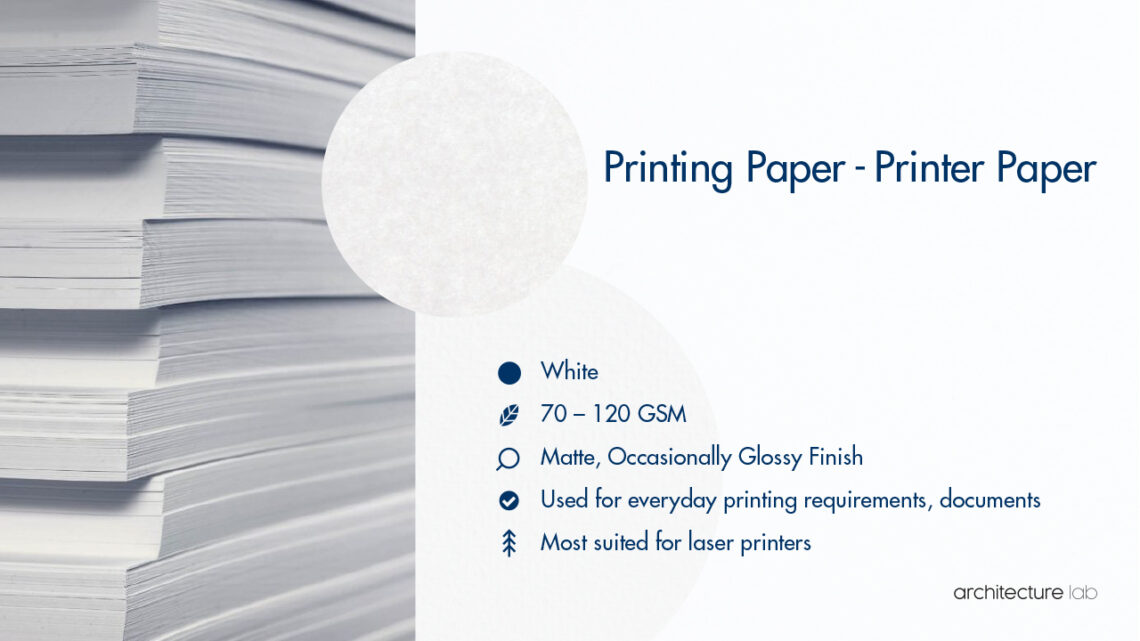
Printing paper is nothing but an umbrella term that includes copier paper, newsprint paper, label paper, magazine and catalog paper, and more. It is one of the many paper types used to print written matter for education, entertainment, and awareness.
In fact, it is one of the most commonly used types of paper in our daily lives, and you are sure to find it lying around the house somewhere!
2. Recycled Paper
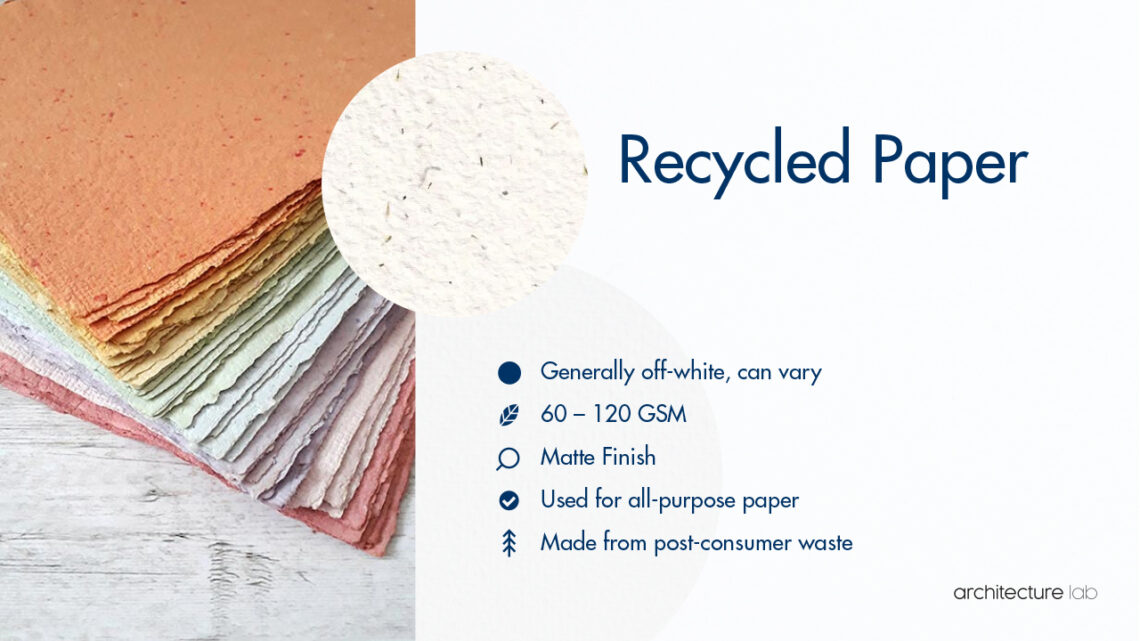
As the name suggests, recycled paper is made from scraps of reused paper products. Both shredded and unshredded forms of such paper are transformed into paper pulp to create recycled or post-consumer recycled paper.
This reduces the wastage of paper, wood, water, energy, and ink, thereby making it an ideal choice for the environmentally conscious.
3. Tracing Paper
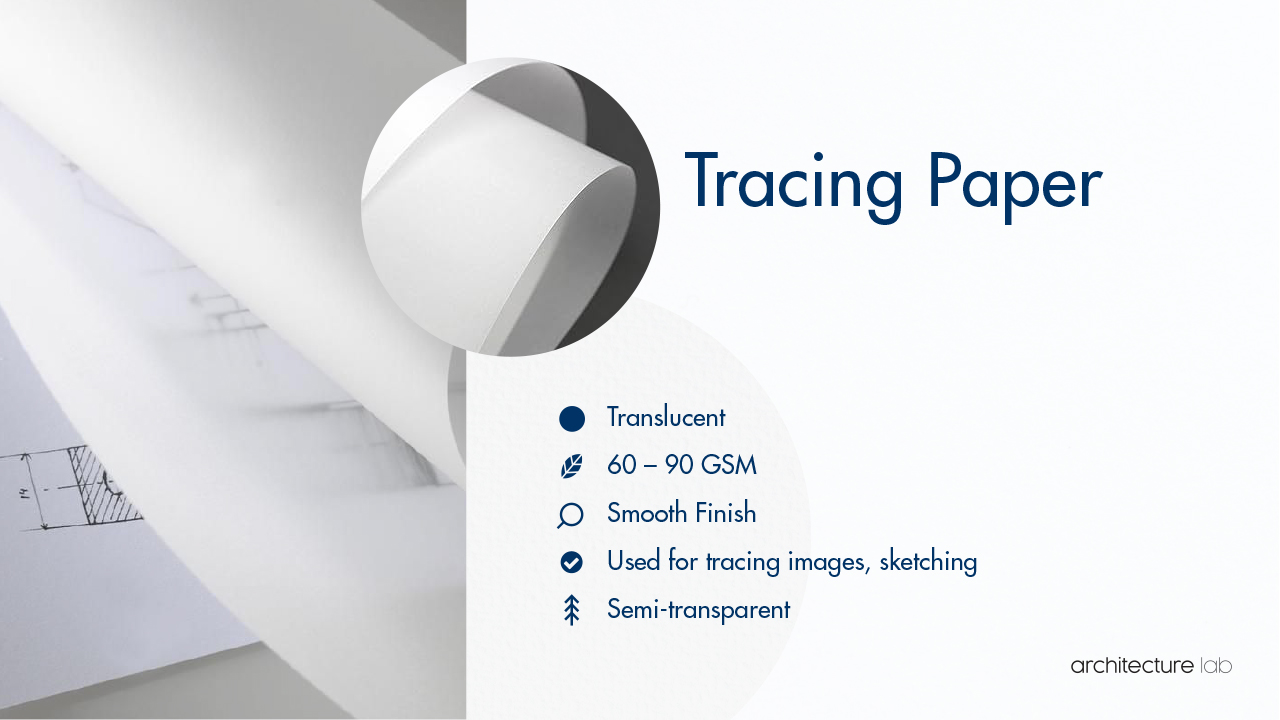
If you are an artist, engineer, or architect, you must have worked with tracing paper. This translucent paper is placed on another printed paper (usually one with a diagram) for you to trace the edges, points, etc., carefully.
Made of cotton fiber and cellulose, some tracing papers may contain fillers for lower opacity. To further decrease the opacity of the paper, the aforementioned fibers are beaten to remove any trapped air. As such, the final product becomes dense and can hold up to a significant amount of moisture.
4. Gloss-coated Paper – Glossy Paper
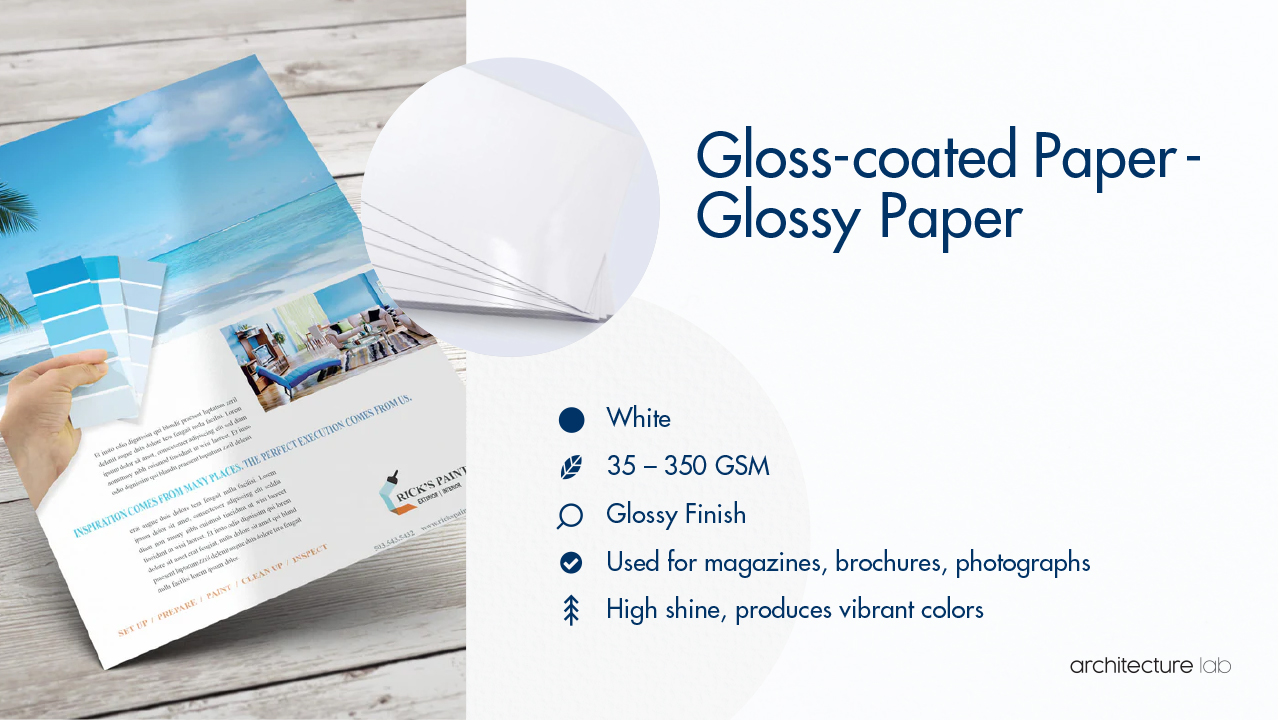
The gloss-coated paper boasts a shiny surface, making it suitable for printing brochures, flyers, etc. While some of these papers may have natural additives like clay, some may have plastic coatings. Hence, not all types of glossy papers are recyclable.
5. Bond Paper
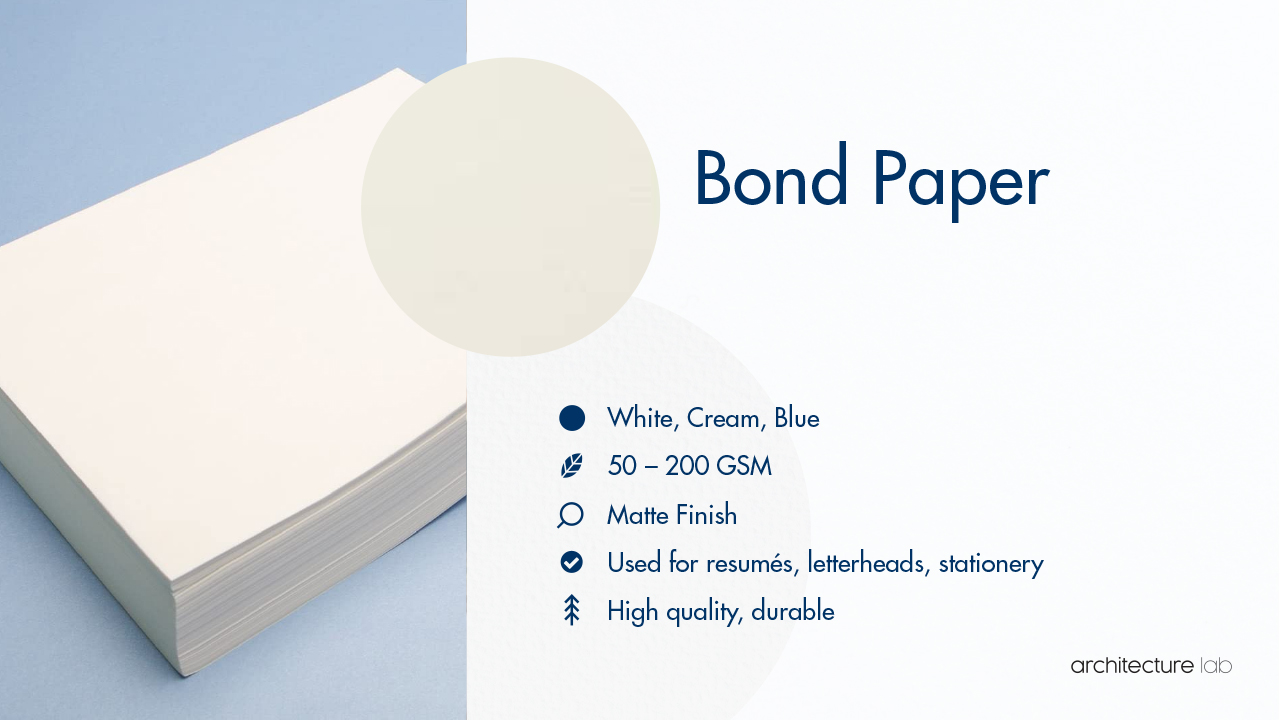
Bond paper is usually heavier and more rigid than an average sheet of paper as it is made of fiber pulp, creating a strong and rough texture. Originally designed for producing government bonds, the paper has now found its way into our offices, schools, and more.
Common types of bond papers weigh 60 g/m2, 75 g/m2, and 90 g/m2.
6. Greeting Card Paper
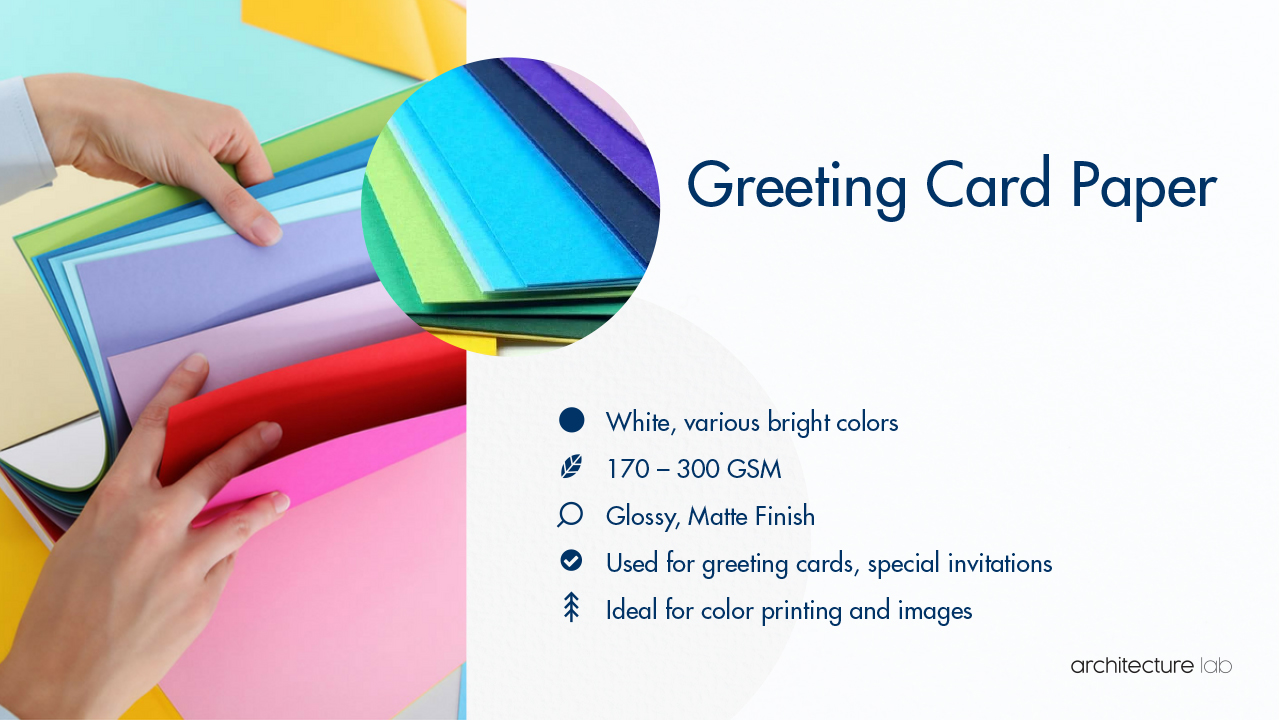
This paper type is a medium-weight cardstock paper used for making greeting cards for holidays, festivals, birthdays, anniversaries, and other special events. While cardstock is thinner than cardboard, it is thicker than the usual printing paper, making it ideal for sending it to family and friends via post.
7. Tissue Paper
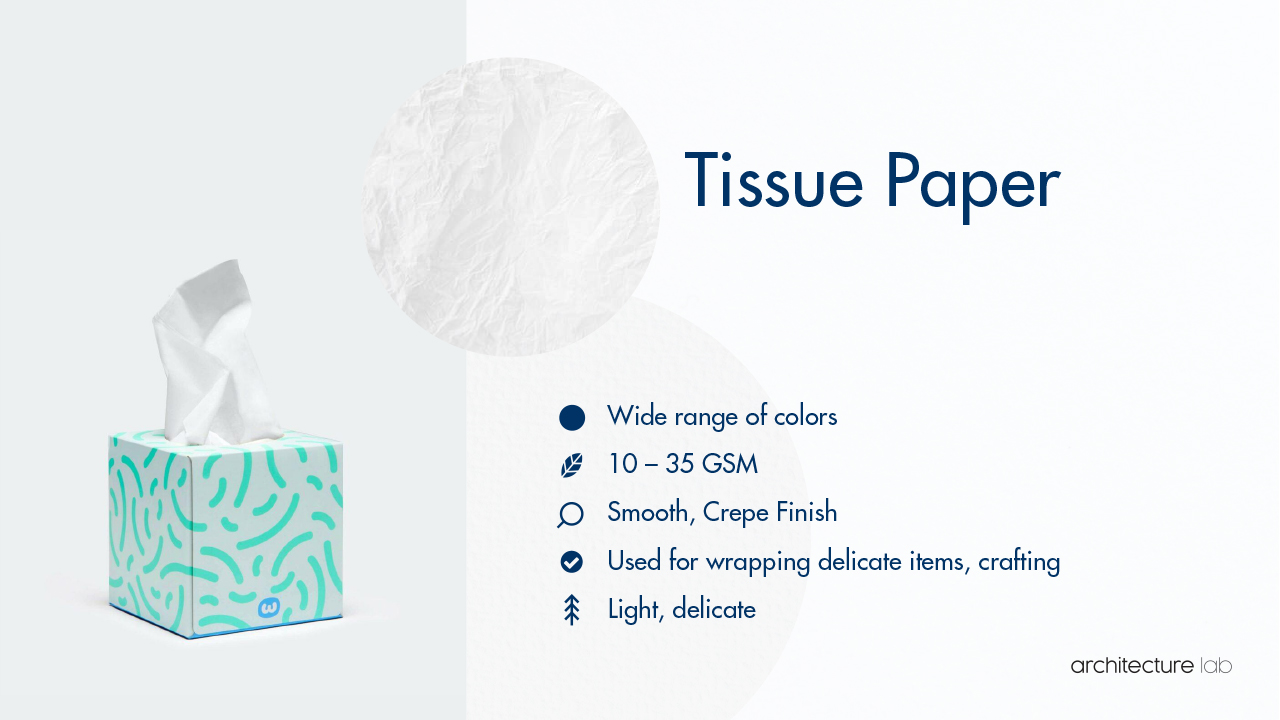
This is yet another common type of paper, and its main characteristics are its weight, thickness, comfort, stretch, and absorbency. It is made using different types of wood pulp, chemicals, and water.
What makes tissue paper so popular is its ability to wipe both wet and dry surfaces. Statistically, the market for tissue paper is believed to grow by 1.8% every year for the next three years.
8. Copy And Copier Paper
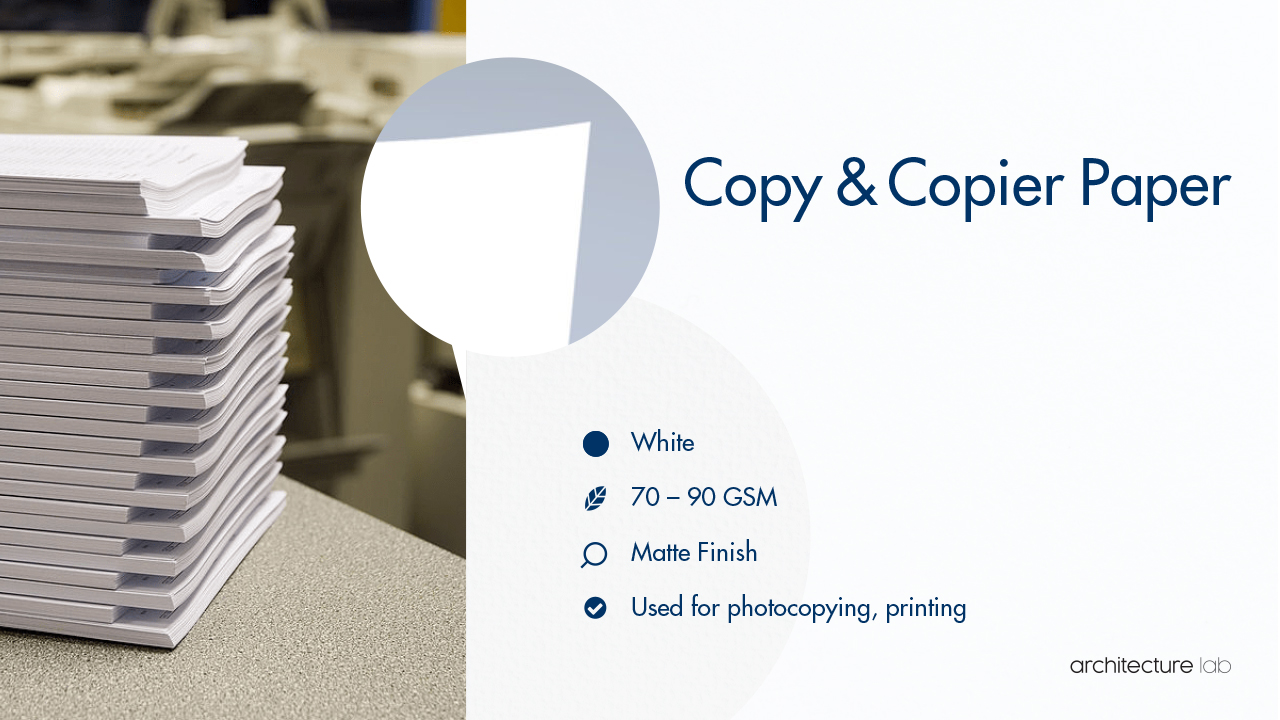
Mostly used in offices, copy and copier paper are designed for printers, fax machines, photocopiers, and more. Its physical aspects make it a versatile pick for either of the two printer technologies, i.e., laser and inkjet.
9. Photo Paper
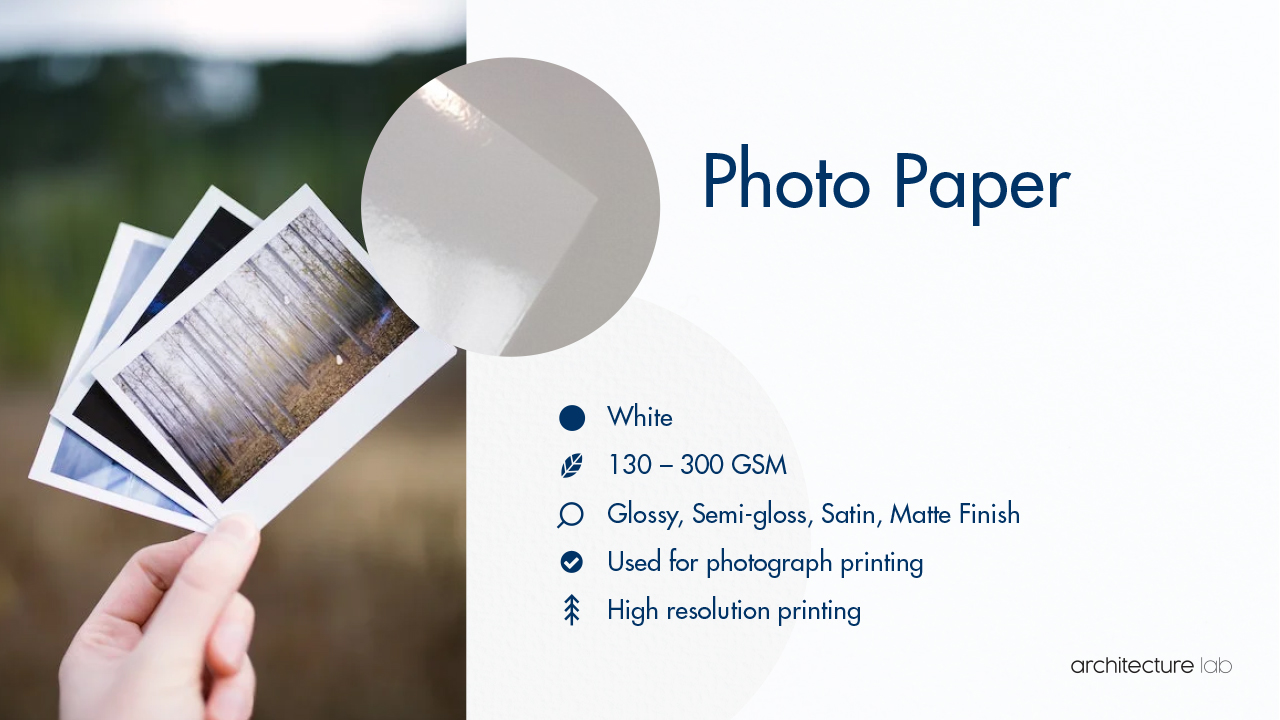
This type of paper may resemble high-gloss paper, but here, the surface is chemically treated for one to project an image on it.
With the advent of mobile phones with high-quality cameras, getting pictures developed from a photographic negative became quite uncommon in the past few years. However, some film photography enthusiasts still swear by the beauty and vibe of a developed photograph, with most of them uploading scans on various social media platforms.
10. Kraft Paper
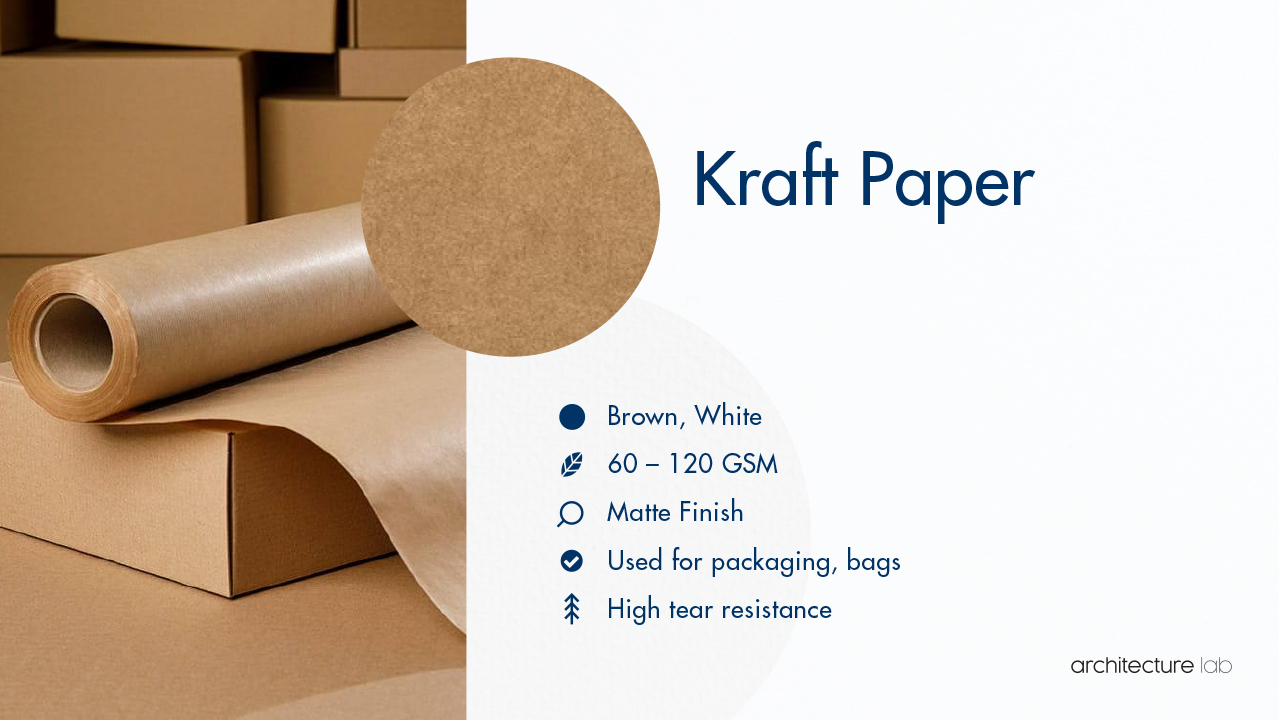
Primarily made of softwood pulp, kraft paper boasts more strength, elasticity, and tear resistance than regular paper. Hence, it makes an excellent packaging material and is also used in manufacturing bags for shopping, sacks for groceries, etc.
11. Business Form Paper – Business Card
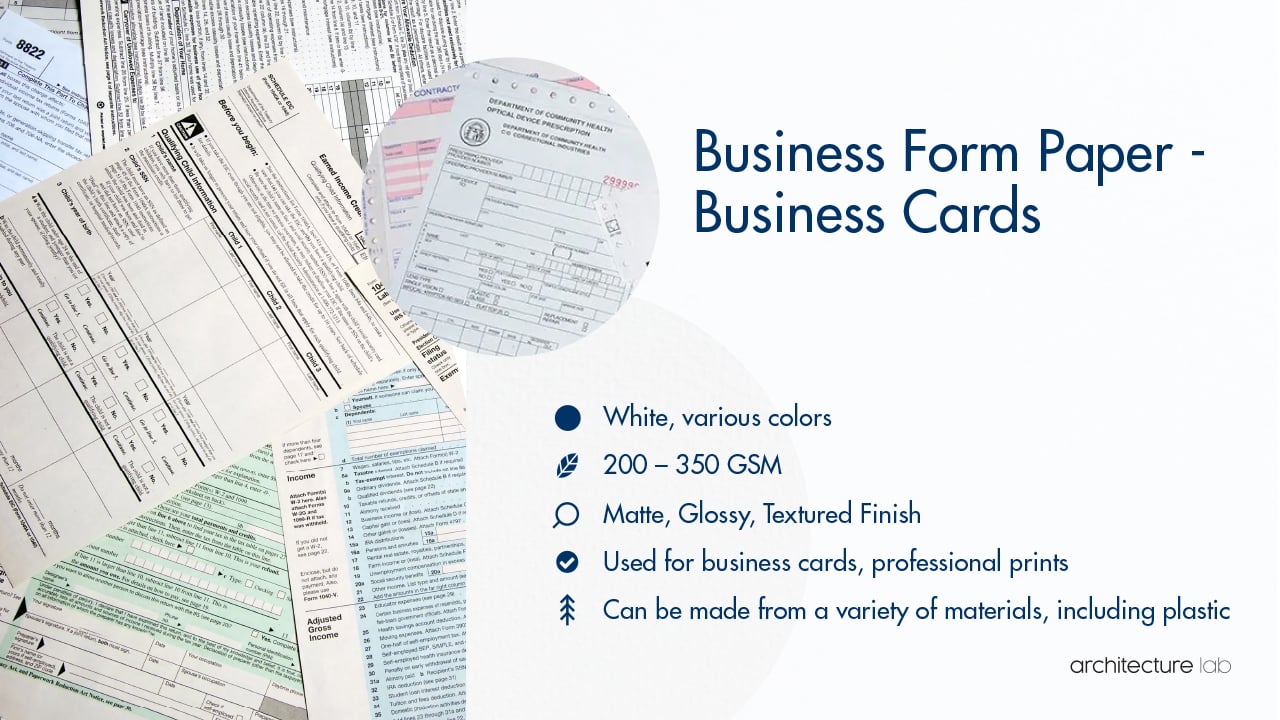
Business form paper is made from cardstock which is basically rigid paper with a smooth texture. It can be used to print business cards, business forms, greeting cards, and more.
12. Tobacco Paper – Rolling Paper
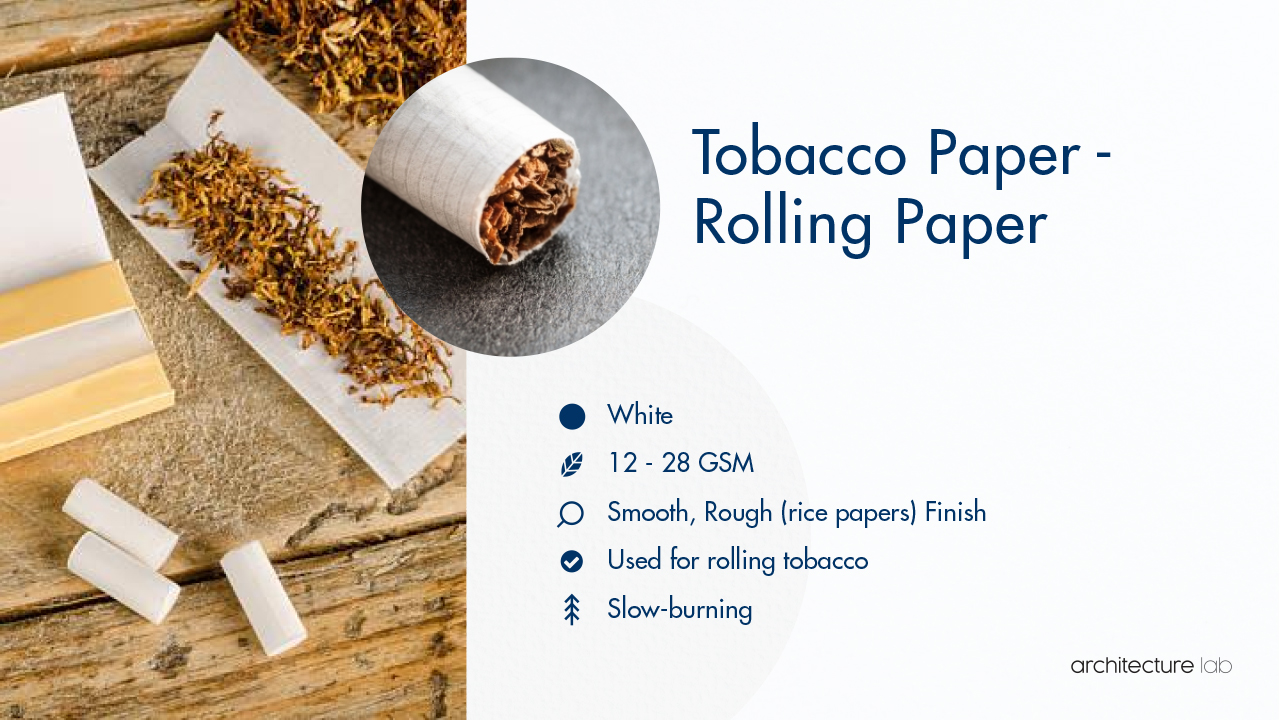
This variant is a thin specialized paper that can be rolled or wrapped around loose tobacco and other plant extracts. Nowadays, instead of wood pulp, tobacco paper or rolling paper is produced using transparent cellulose, hemp, or rice.
13. Box Covering and Lining Paper
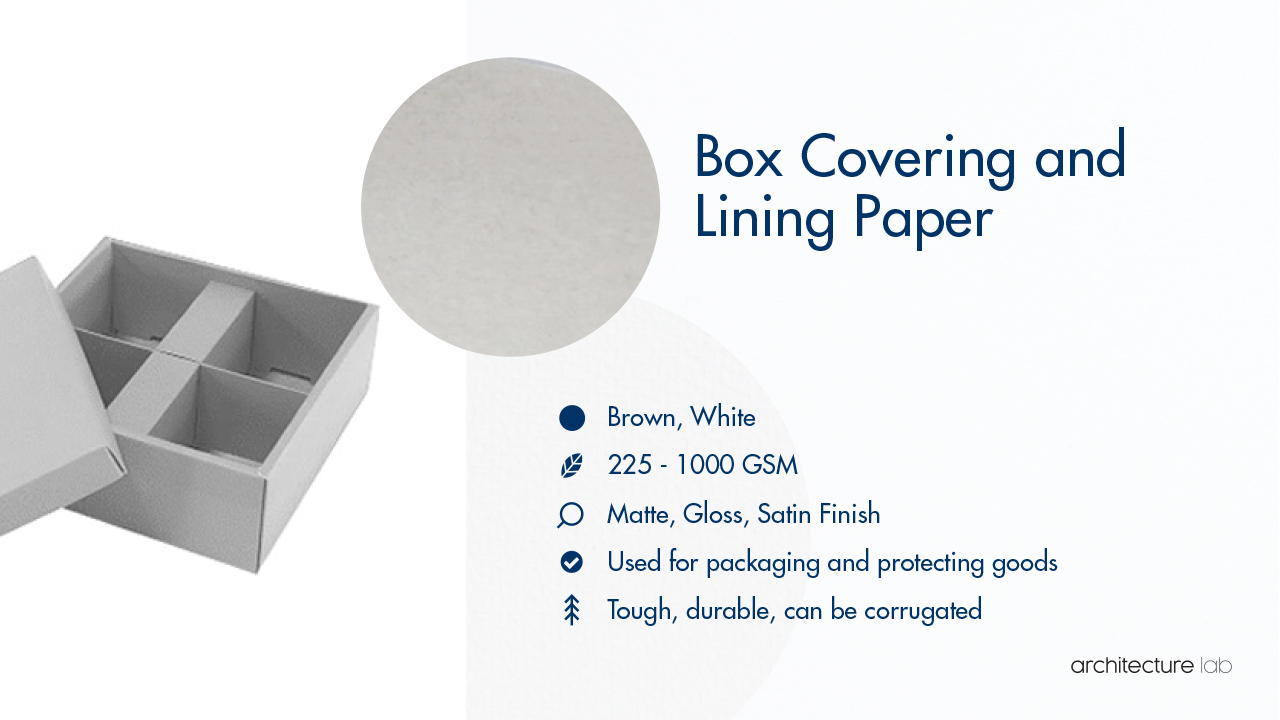
Box covering and lining paper is basically an additional inner or outer paper layer used for protection as well as aesthetic purposes. Some common types of boxes that may require this type of paper are baker’s boxes, shirt boxes, cereal boxes, etc.
14. Parchment Paper
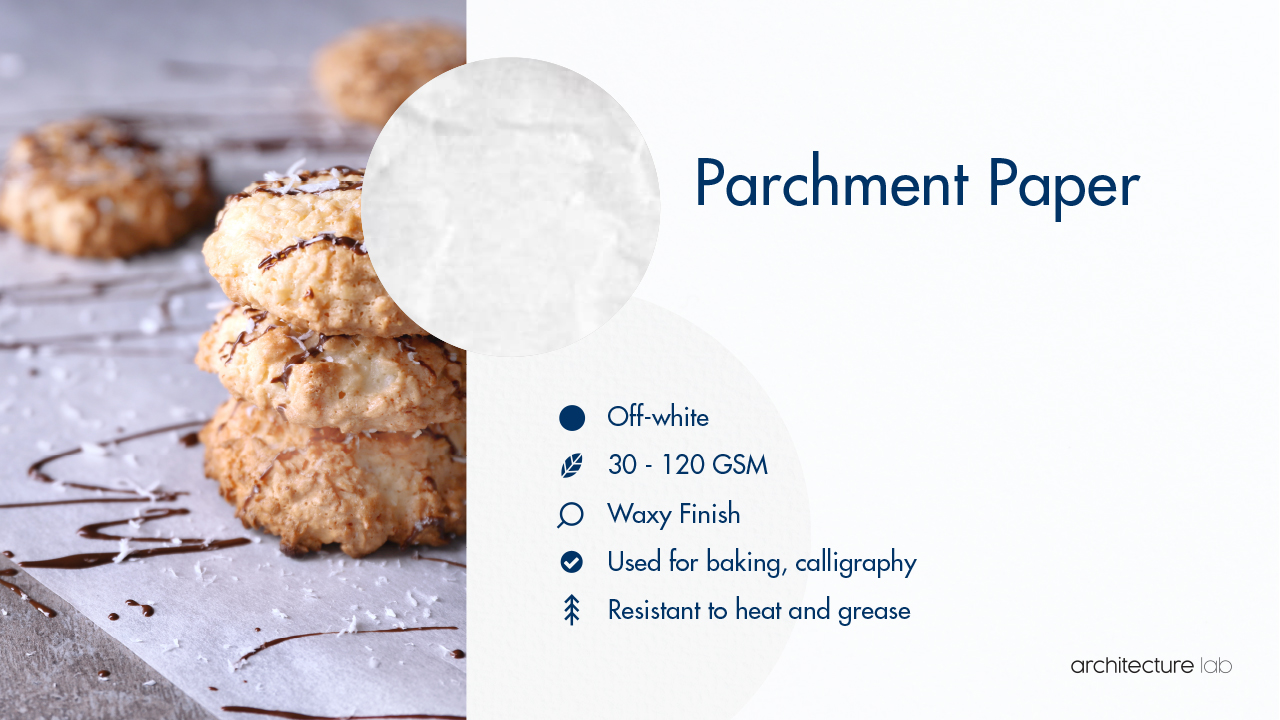
Often found in the kitchen, parchment paper is thin, translucent, and non-sticky. While it may look like tracing paper or wax paper at first, its silicone coating lends it a higher flashpoint, making it ideal for lining baking trays.
Thus, never use wax paper instead of parchment paper in your baking experiments, as the former is not heat resistant.
15. Newsprint Paper
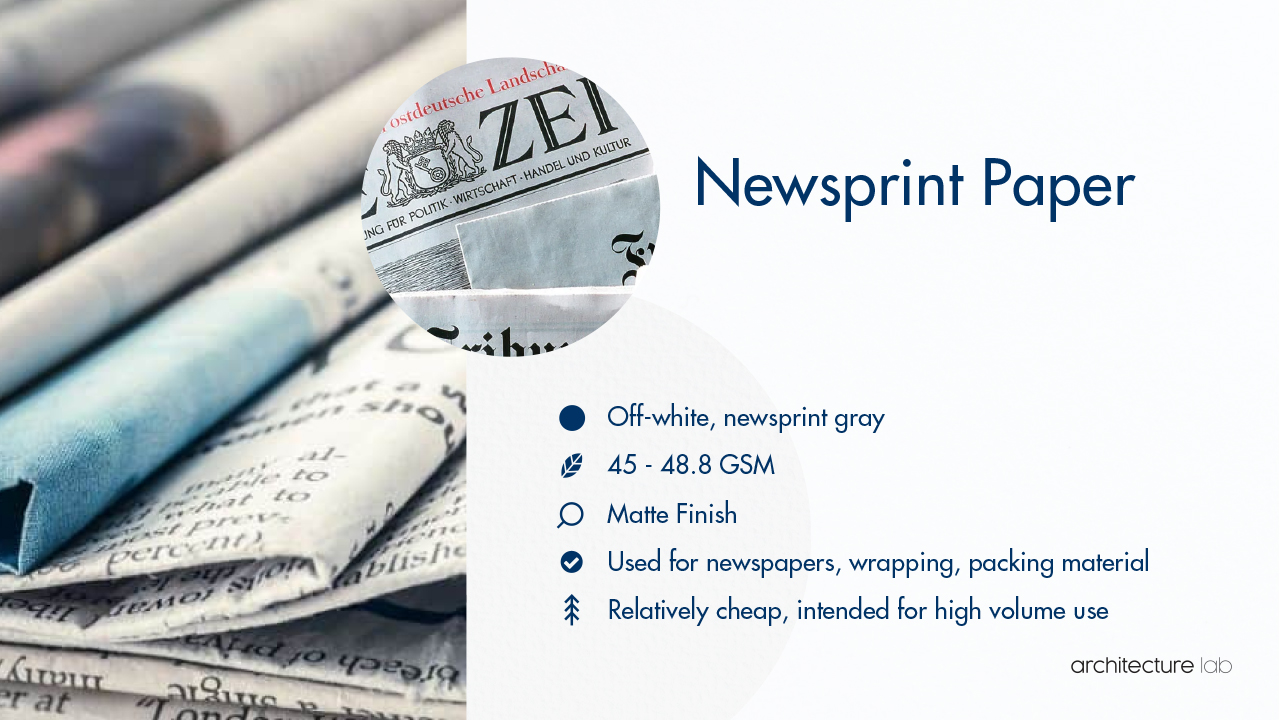
Produced from groundwood pulp, newsprint paper is the cheapest bulk paper product and hence, non-durable. But considering the short lifespan of the end product, the low tear-resistance and yellowing nature of this paper is not a dealbreaker.
As you may have guessed, it is used for printing newspapers, magazines, comic books, and more. However, there are various grades of this paper type, out of which the highest grade is used to print high-quality color photos, advertisements, etc.
16. Wax Paper – Waxed Paper
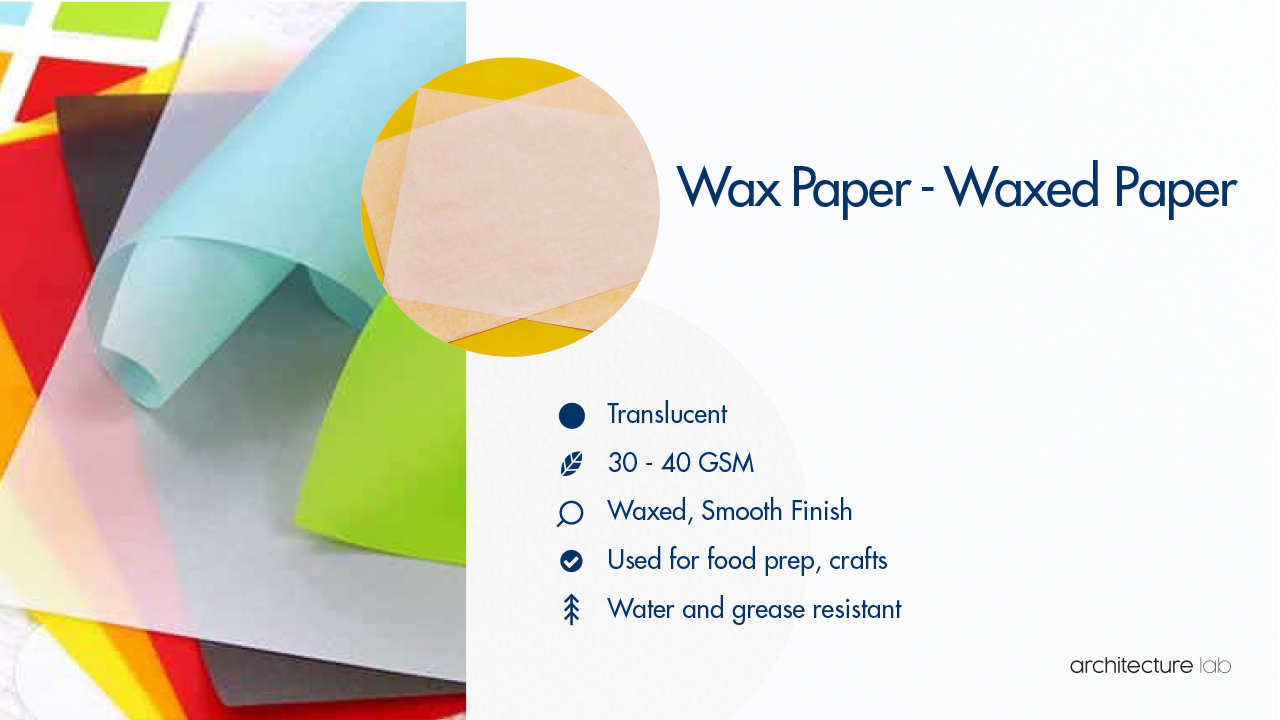
Wax or waxed paper is another must-have in the kitchen, owing to its non-stick properties and moisture resistance. Although it is cheaper than parchment paper and can be used for cooking, it shouldn’t be subjected to very high temperatures. This is because the wax coating can melt and spoil the food or even cause a fire.
17. Inkjet Paper
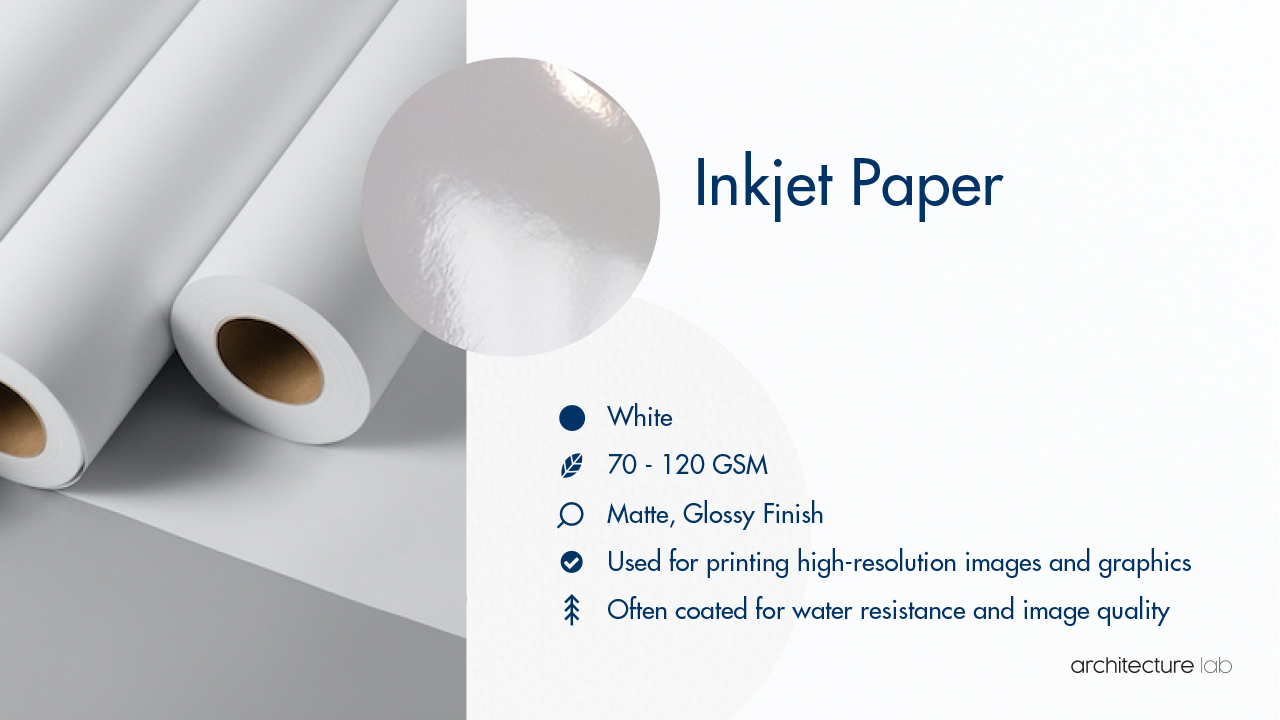
Unlike all types of printer papers, inkjet paper is used for inkjet printer technology only. Grouped according to the weight, opacity, smoothness, and brightness of the paper, the three types of inkjet paper are glossy paper, metallic paper, and luster paper.
A significant factor about inkjet paper is its optimal absorbency, allowing it to absorb the ink properly and not cause any bleeding.
18. Drinking Cup Paper
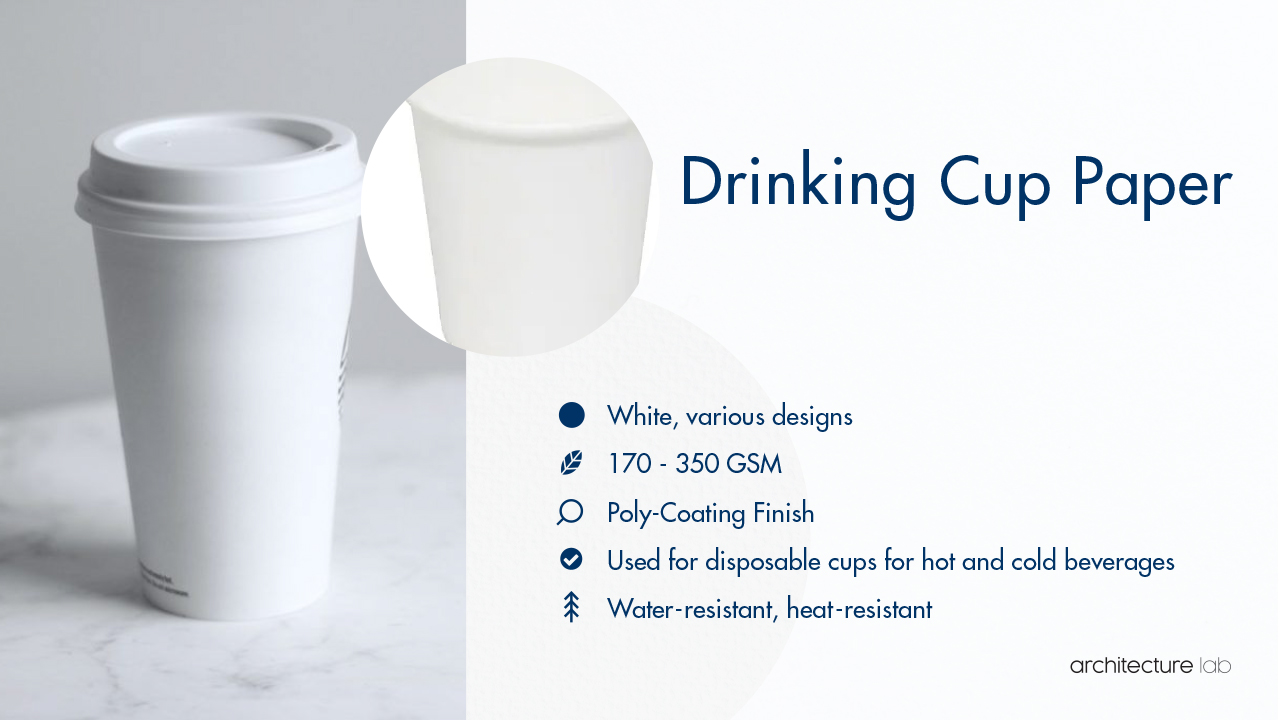
Drinking cup papers are usually coated with wax or other similar substances to reduce the level of absorbency. Hence, this type of paper is a disposable, single-use item suitable for holding drinks and liquids.
19. Wove Paper
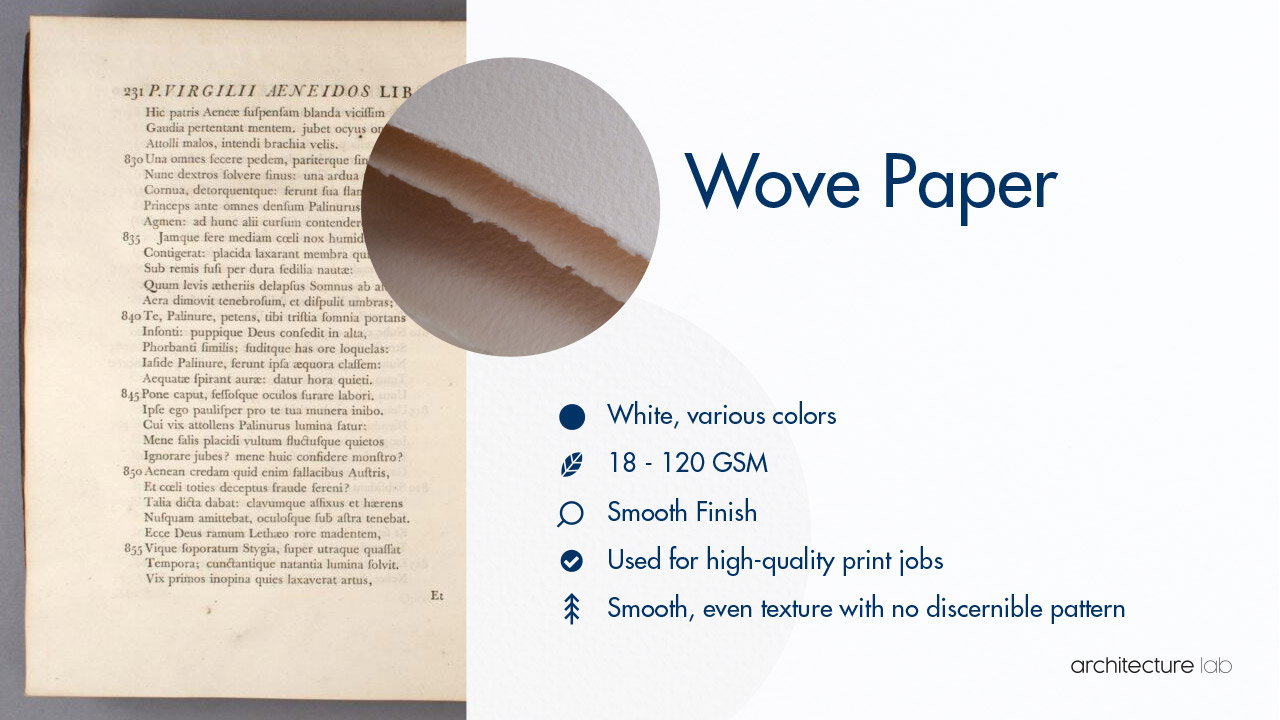
Boasting a vintage feel, the woven paper consists of brass or other metallic wires woven in such a way that there is no distinct pattern on the final product. Invented by James Whatman, this paper-making procedure soon spread across America, France, and England.
Interestingly, the highest grade of this type of paper is called Whatman paper and displays a grained pattern with no lines.
20. Acid-free Paper
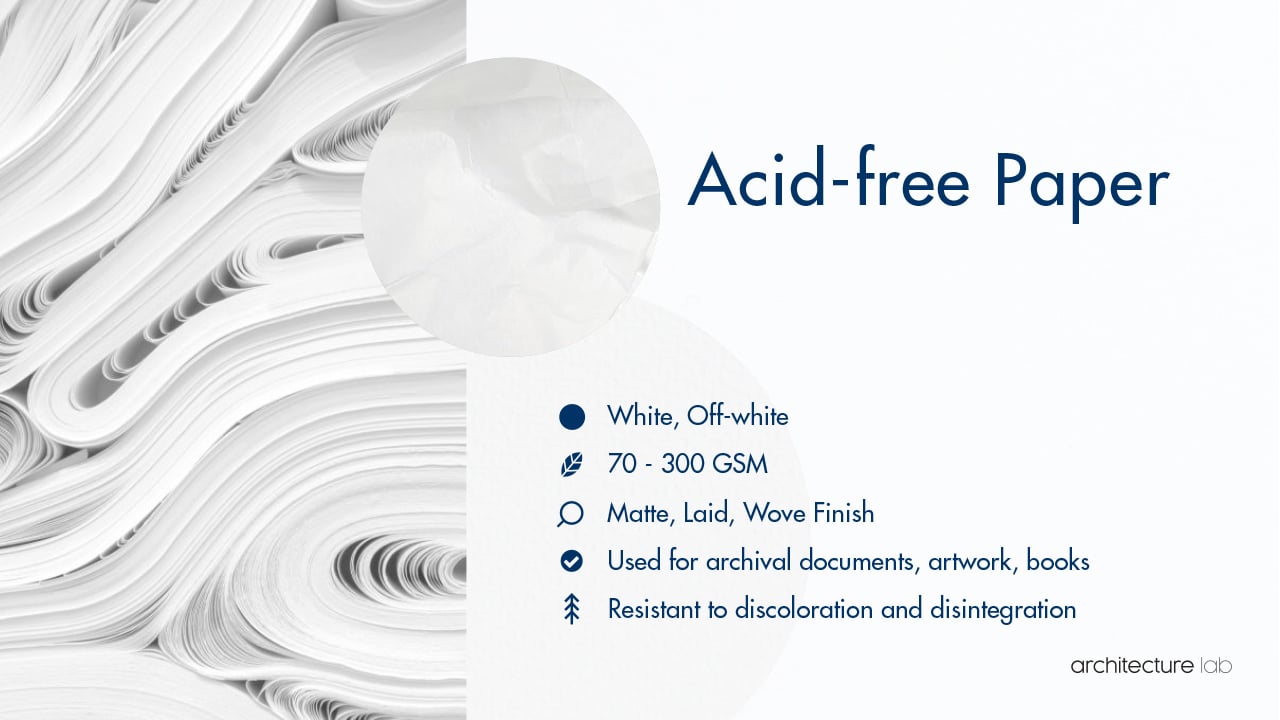
Produced with an alkaline pulp solution including calcium bicarbonate, the acid-free paper demonstrates a pH reading of more than 7. During the production process, the lignin is completely eliminated from the pulp, making the acid-free paper suitable for preserving documents. Hence, the paper can withstand the test of time without deteriorating or yellowing.
21. Filter Paper
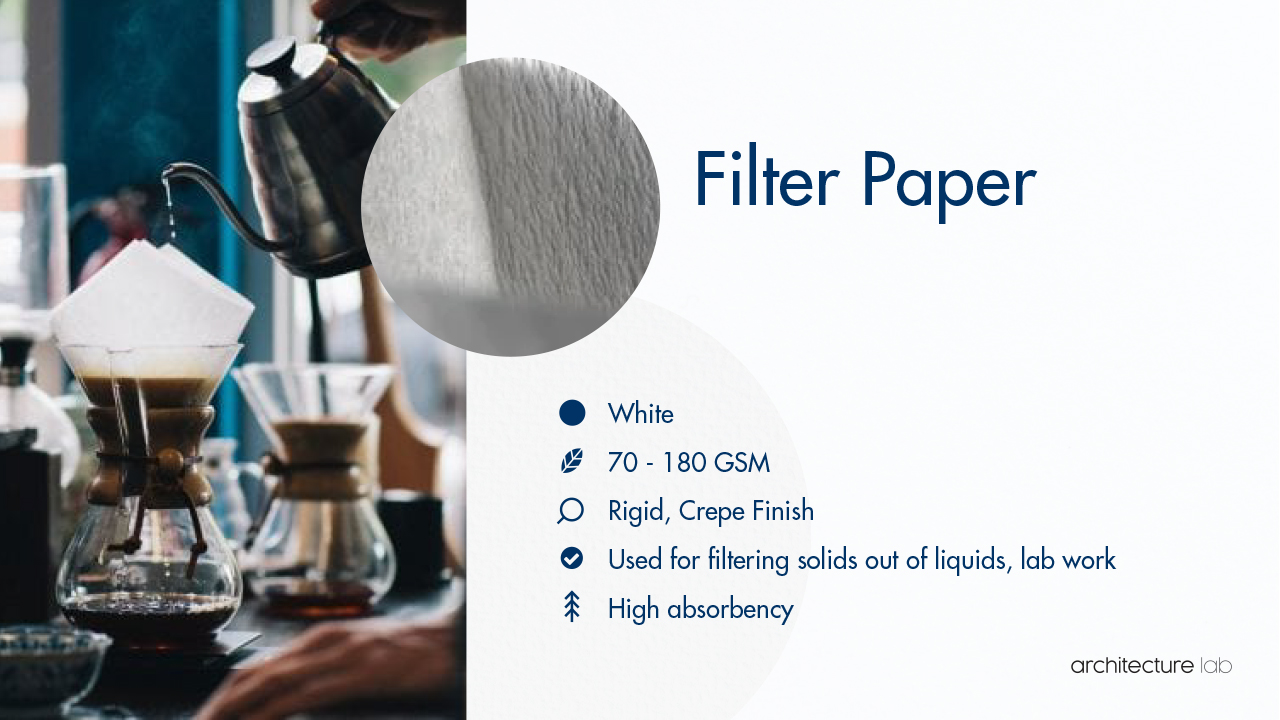
Coffee lovers can agree that filtered coffee tastes better, and according to studies, it is actually good for your heart health. Moreover, filter paper can be used to separate chemicals, liquids, gases, etc., not just from edible liquids but also from fuels in automobiles.
22. Shoe Paper
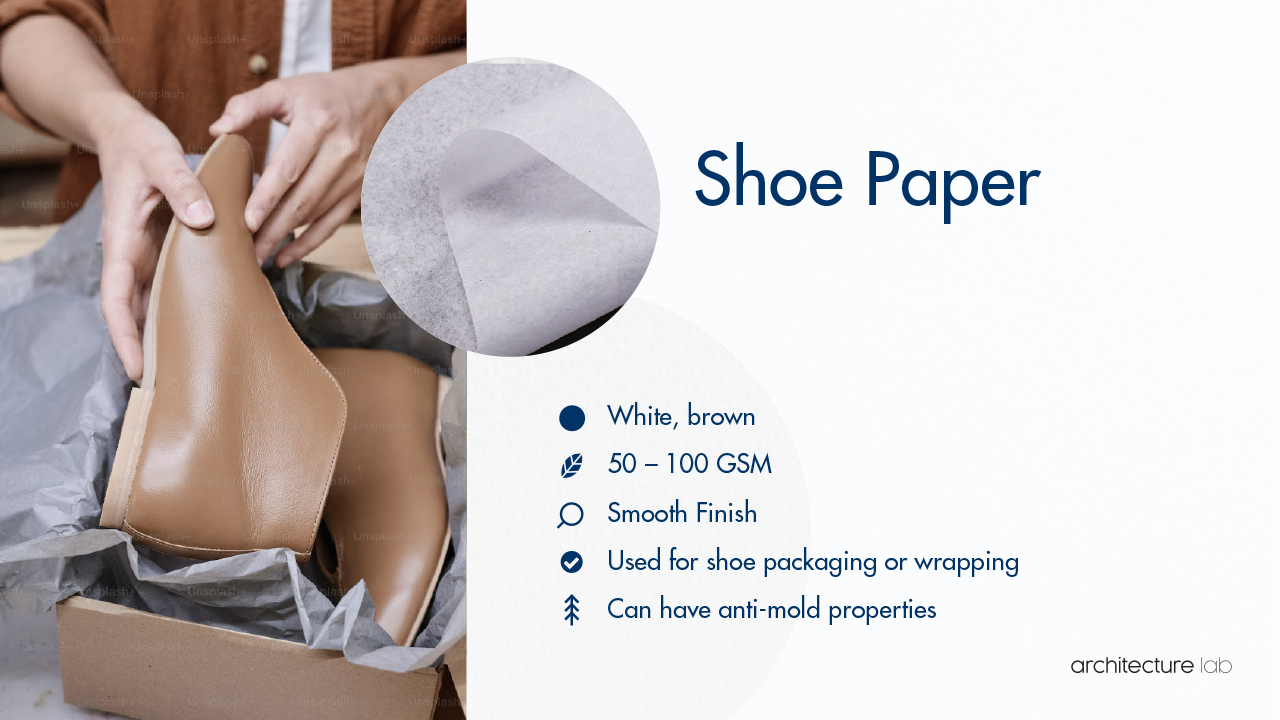
Shoe paper is used to wrap and scuff shoes inside cardboard boxes. As such, it protects the shoes from damage during shipment and storage.
23. Litmus Paper
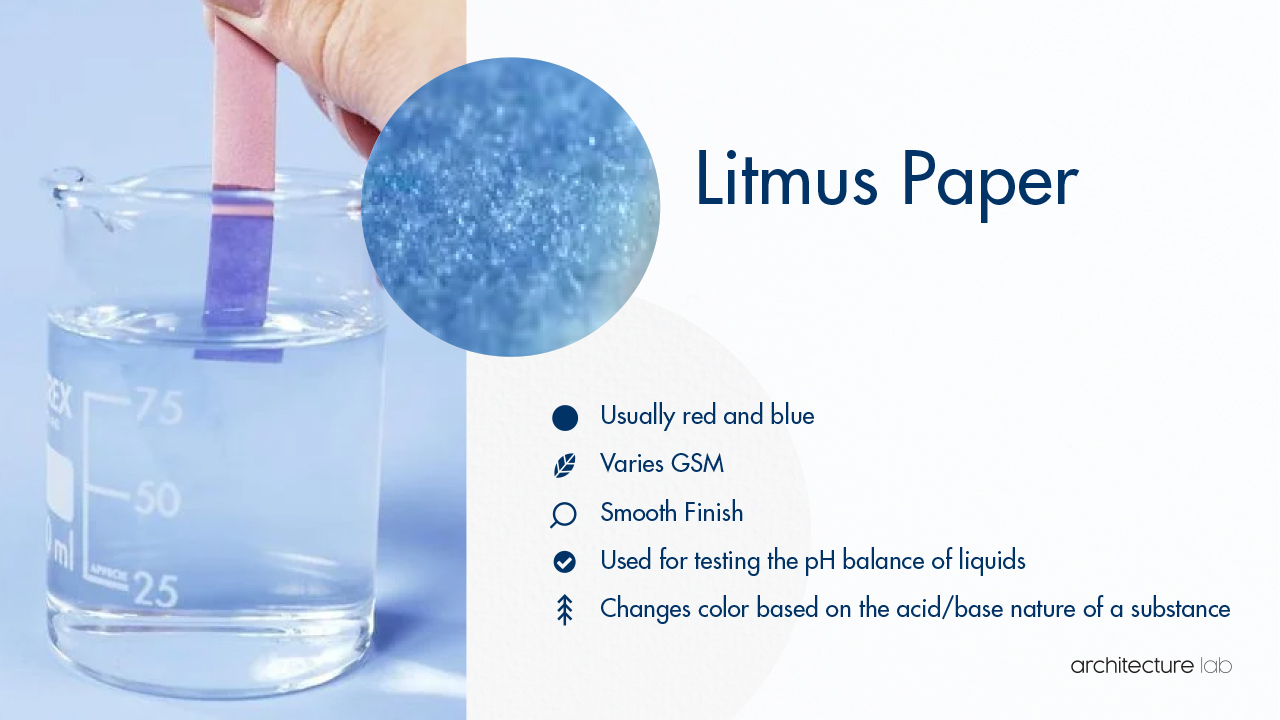
Litmus paper is another type of filter paper that changes color when it comes in contact with a particular substance. Because of this, it exhibits high absorbency and produces a specific color according to the alkalinity and acidity of the substance in contact.
24. Artist’s Paper
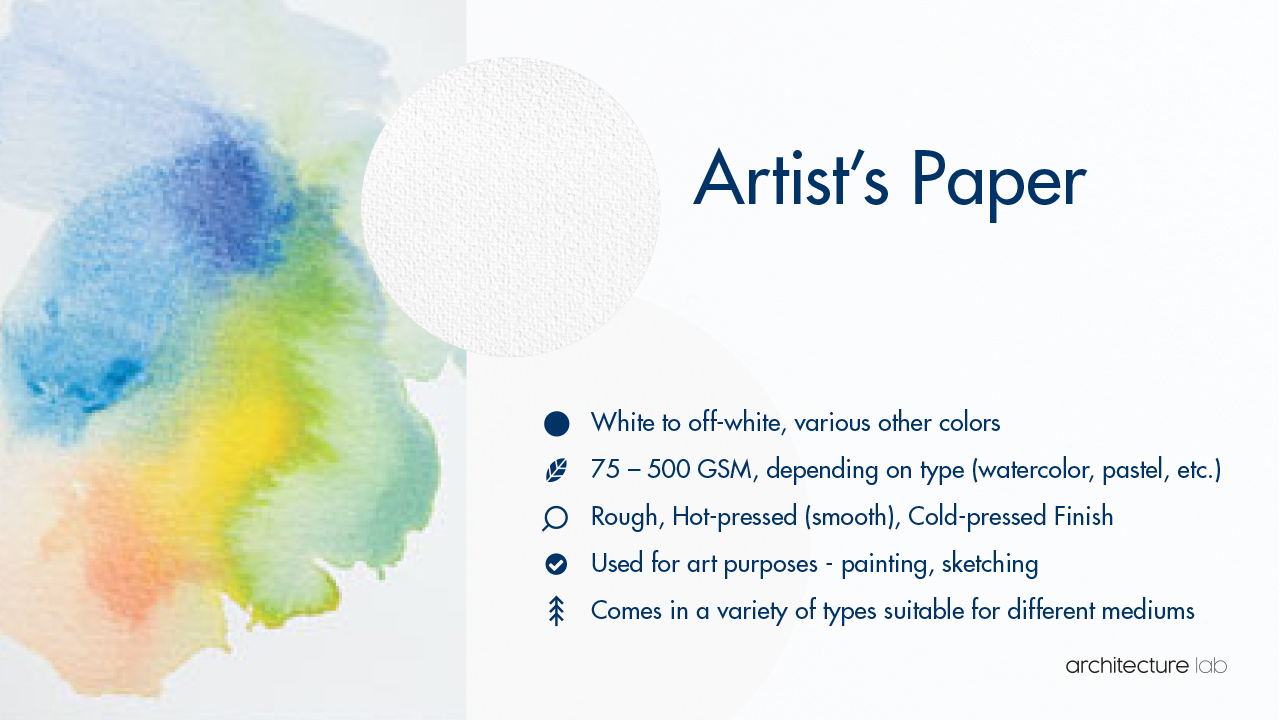
There are different types of artists’ papers, depending on the thickness and properties of each. However, all of them are used for creative expression such as drawing, painting, sketching, etc. Because of this reason, even tracing paper is a common type of artist’s paper.
25. Book Paper
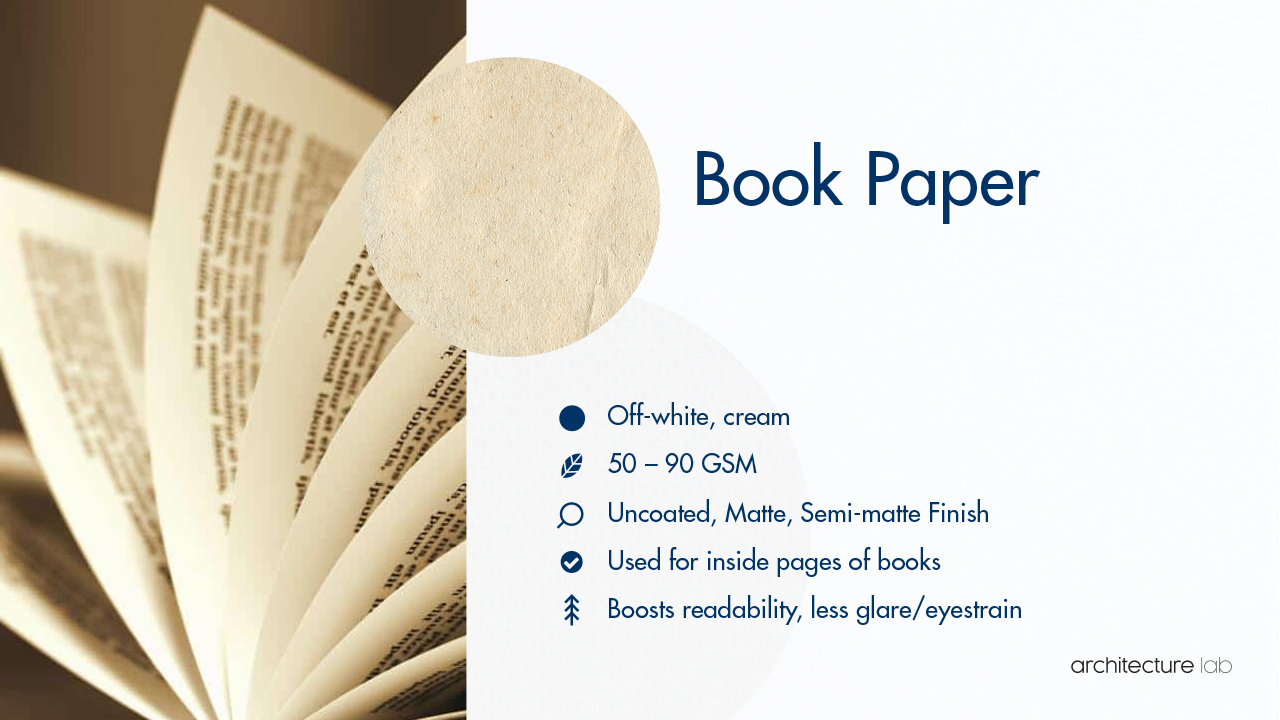
Also known as publishing paper, book paper is designed for printing books and exhibits an off-white or low-white color, making it easier to read. However, the paper must be opaque enough to prevent “ghosting” of text from the previous or following page.
Some common grades of book paper are woodfree uncoated papers, special fine papers, machine-finished coated papers, and coated fine papers.
26. Manila Paper
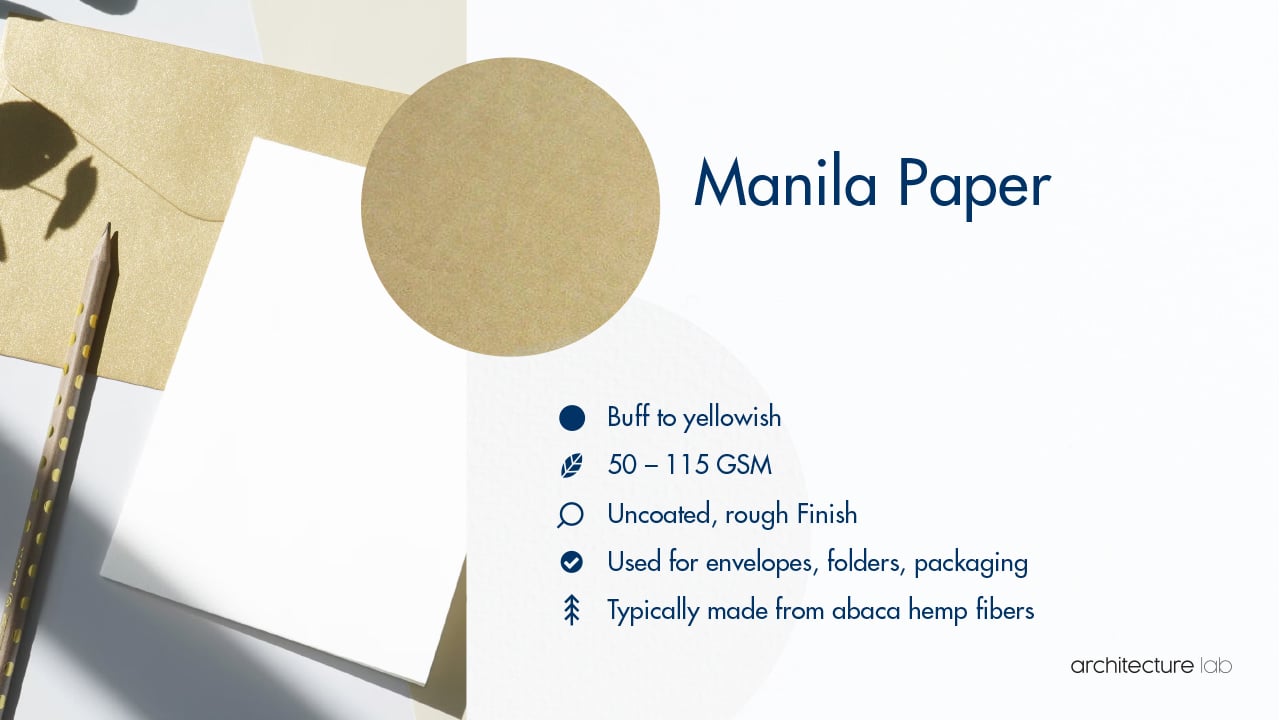
Made with semi-bleached wood fibers and cheaper recycled material, manila paper is generally used for making brown envelopes, folders, and other stationery items. However, another variant called true manila is used as filter paper or tea bags.
27. Banana Paper
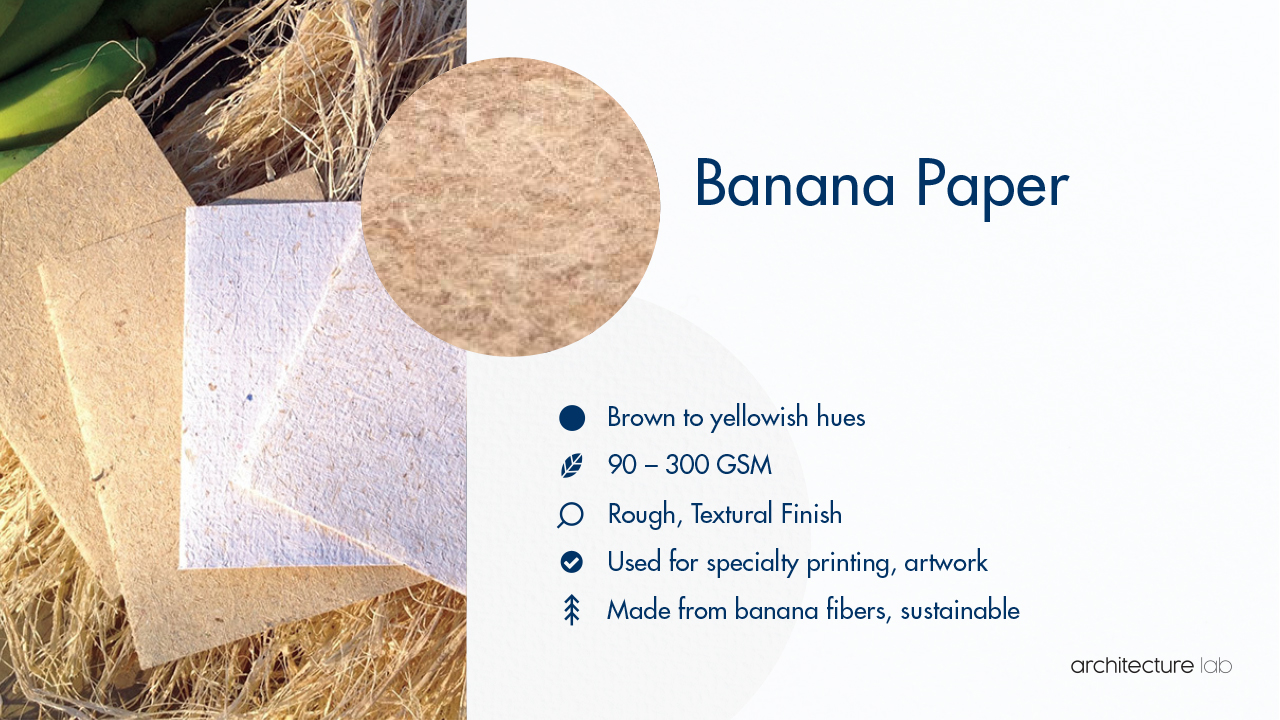
Here’s another pick for the environmentally conscious!
As banana trees produce fruits once a year, the rest of the leaves and the tree (if cut down) end up creating a lot of waste. Hence, the waste banana fibers are turned into paper, thereby preventing pollution and deforestation.
Note that banana paper can be made in two ways- from the bark and from non-utilizable fruits and stems. As a result, the end products vary in properties, making them suitable for different purposes.
28. Cotton Paper
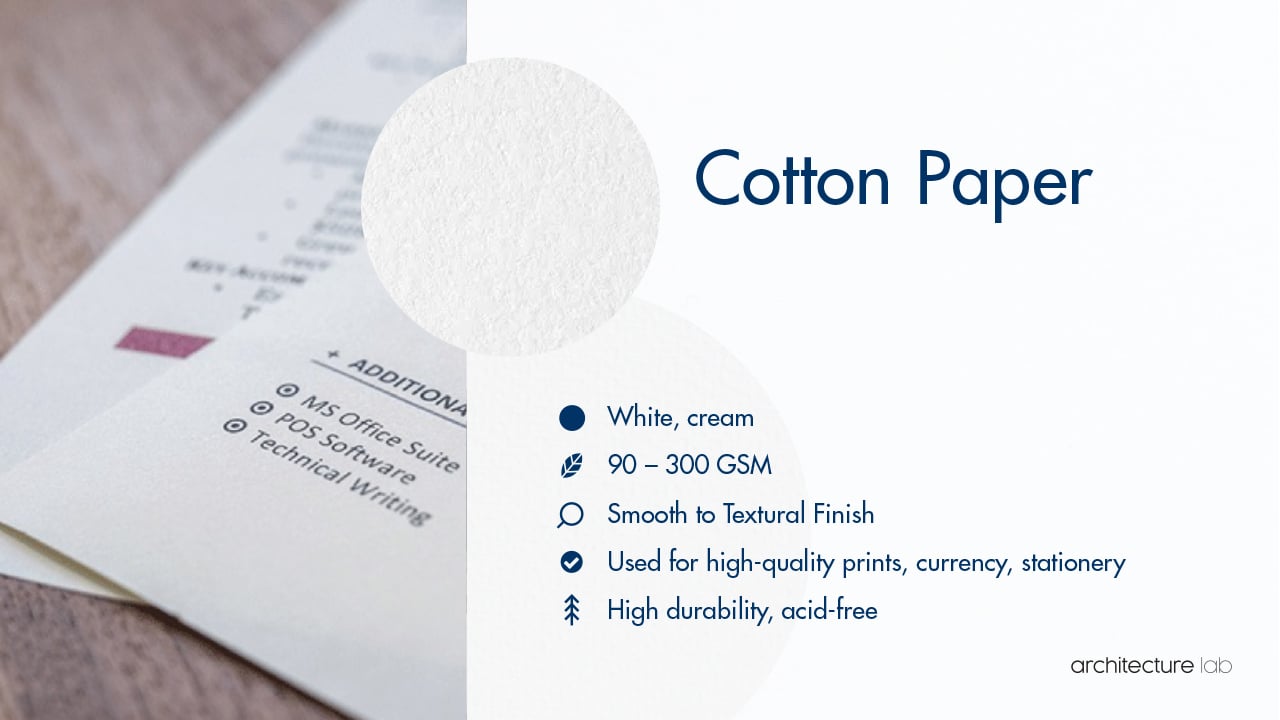
Cotton paper is used for maintaining important documents, archival copies, printed circuit boards, and more. This is because cotton fibers are stronger and more durable than wood pulp, offering better absorbency.
In fact, high-quality cotton papers can last for ages without much discoloration or any other signs of deterioration. Thus, it is the ideal pick for making legal document papers.
29. Sandpaper
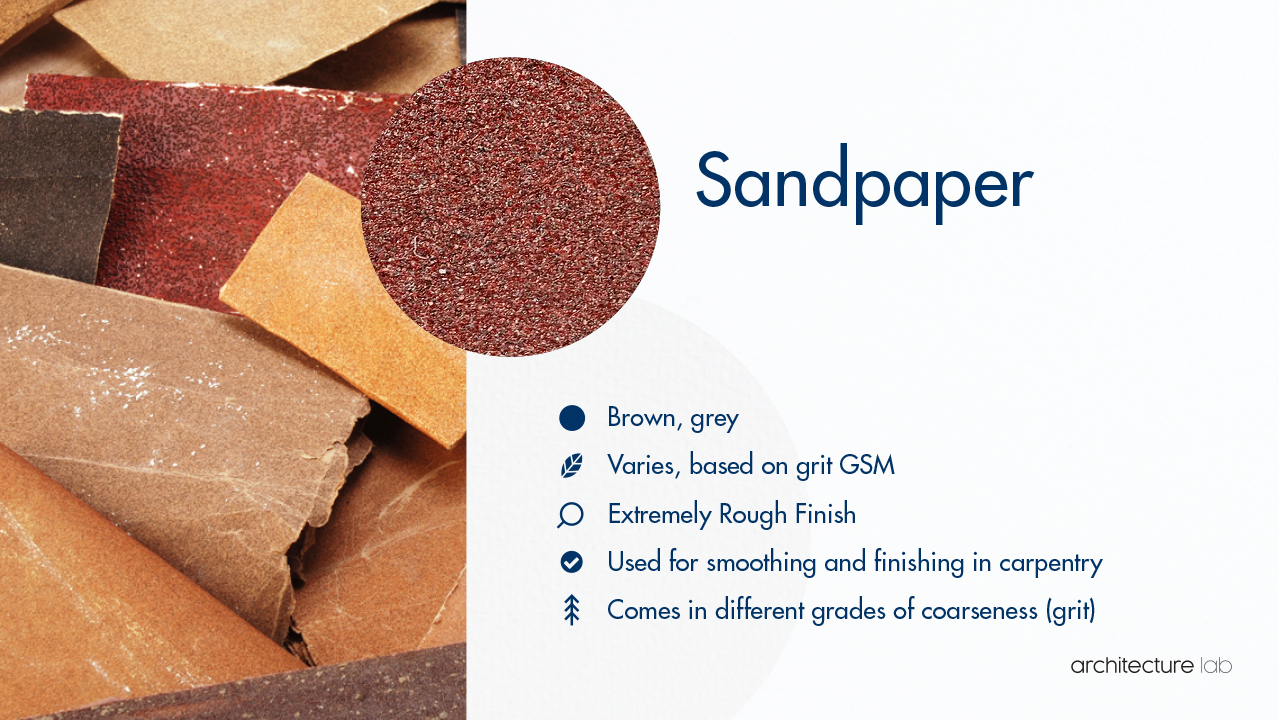
This paper variety consists of multiple layers of paper and cloth along with a rough compound polished on one side. The grit sizes may vary according to the type of sandpaper you opt for. For reference, a larger number like 1200 denotes a grit, whereas a smaller number like 50 means rough grit.
Moreover, some of the abrasive compounds used in sandpaper are silicon carbide, aluminum oxide, garnet, and emery.
30. Wallpaper
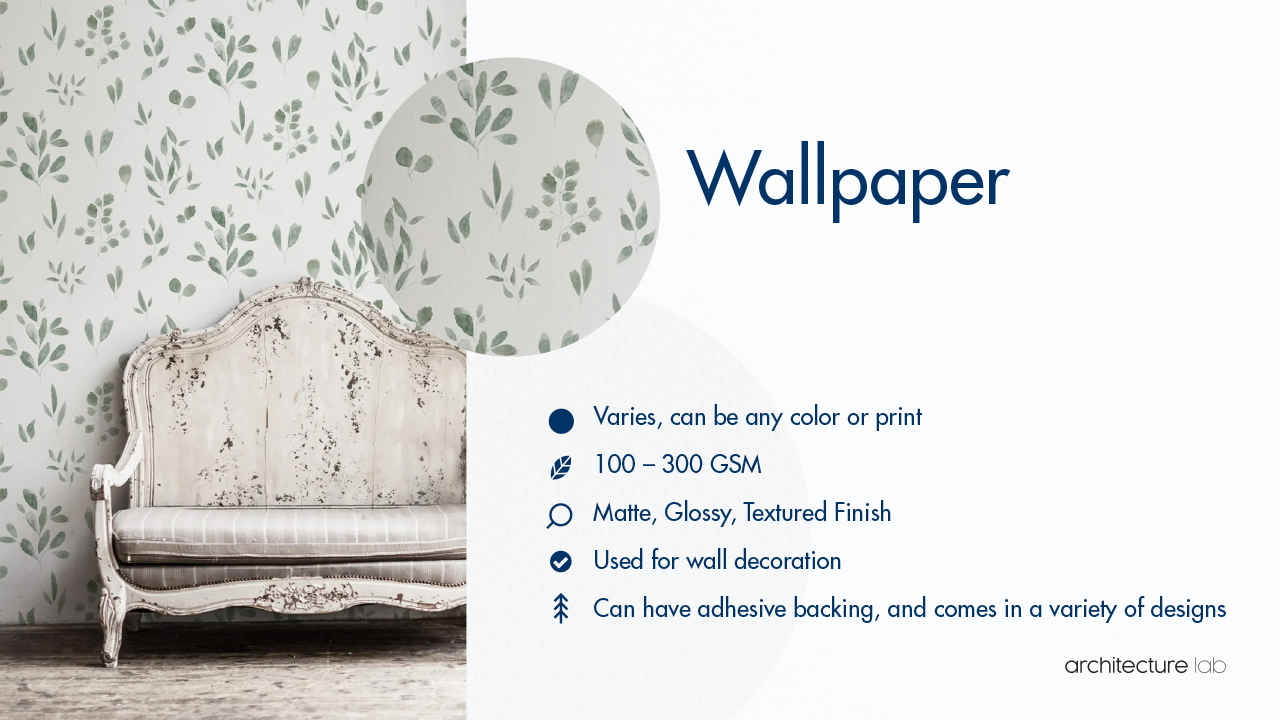
This is another one of the many paper types that one can find at home or in offices. Earlier wallpaper designs featured landscapes and extravagant designs, but nowadays, homeowners tend to opt for simpler and minimalistic patterns.
Different types of wallpapers are made using various manufacturing processes like digital printing, surface printing, gravure printing, rotary printing, and more. As a result, you can find wallpapers in different colors, patterns, and textures.
31. Blotting Paper
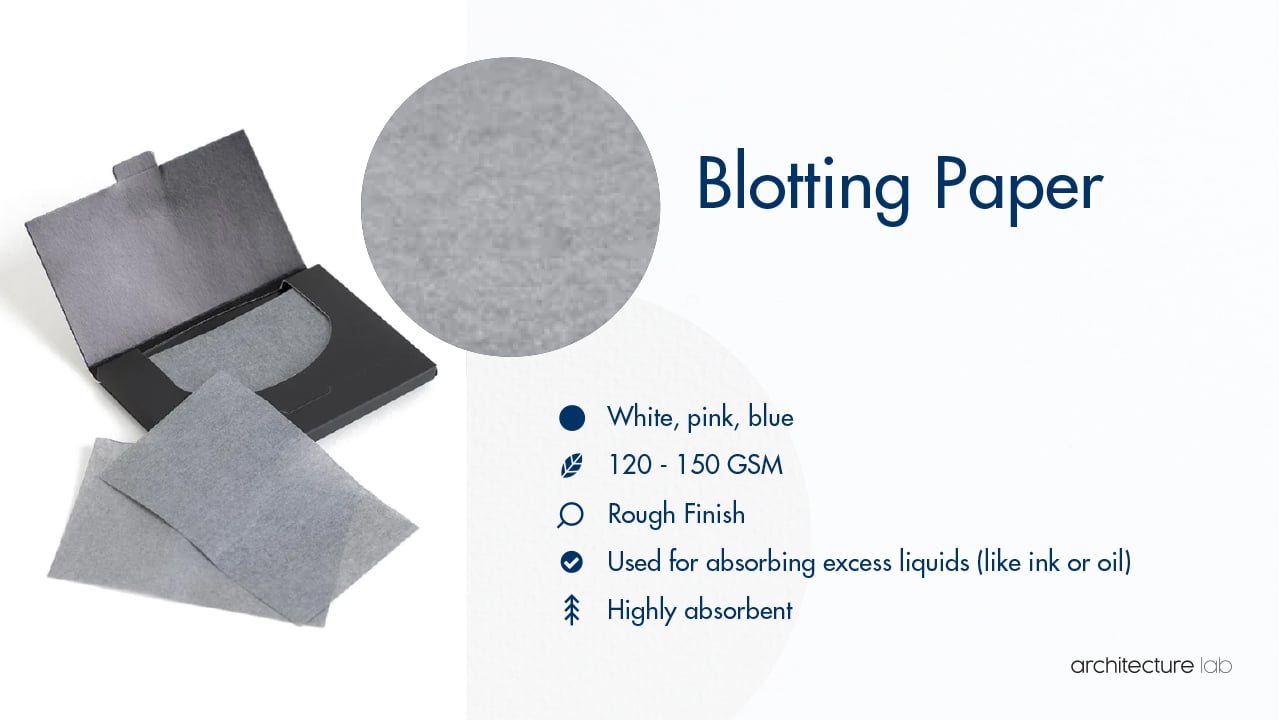
Blotting paper is also quite translucent and can be used to absorb liquids from surfaces and objects. Hence, one can use blotting paper to remove liquid from a microscope slide prior to observation, absorb sebum from the face, and more.
32. Food Paper
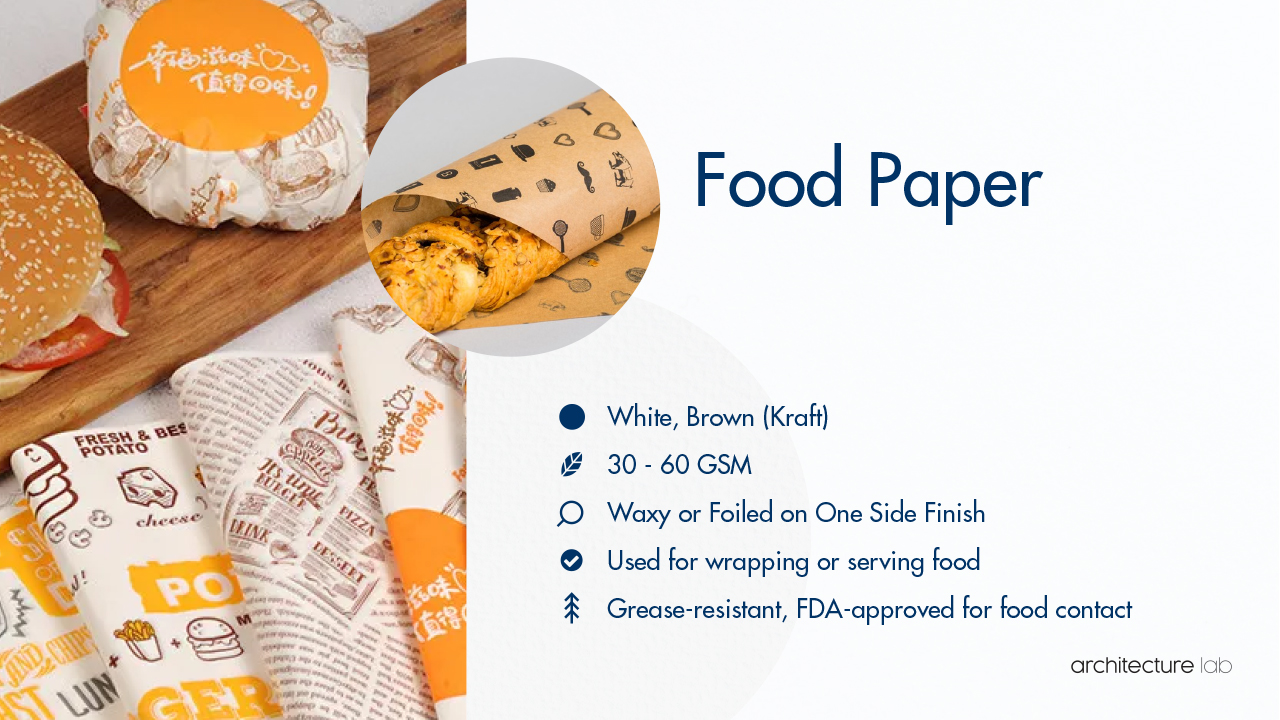
Candy wrapping paper, deli paper, fish paper, butcher’s wrapping paper- these are just a few types of food paper available out there. As the names suggest, each of these food papers is used to cover a particular food item for protection and storage. This is especially important during food deliveries and shipments.
33. Xuan Paper
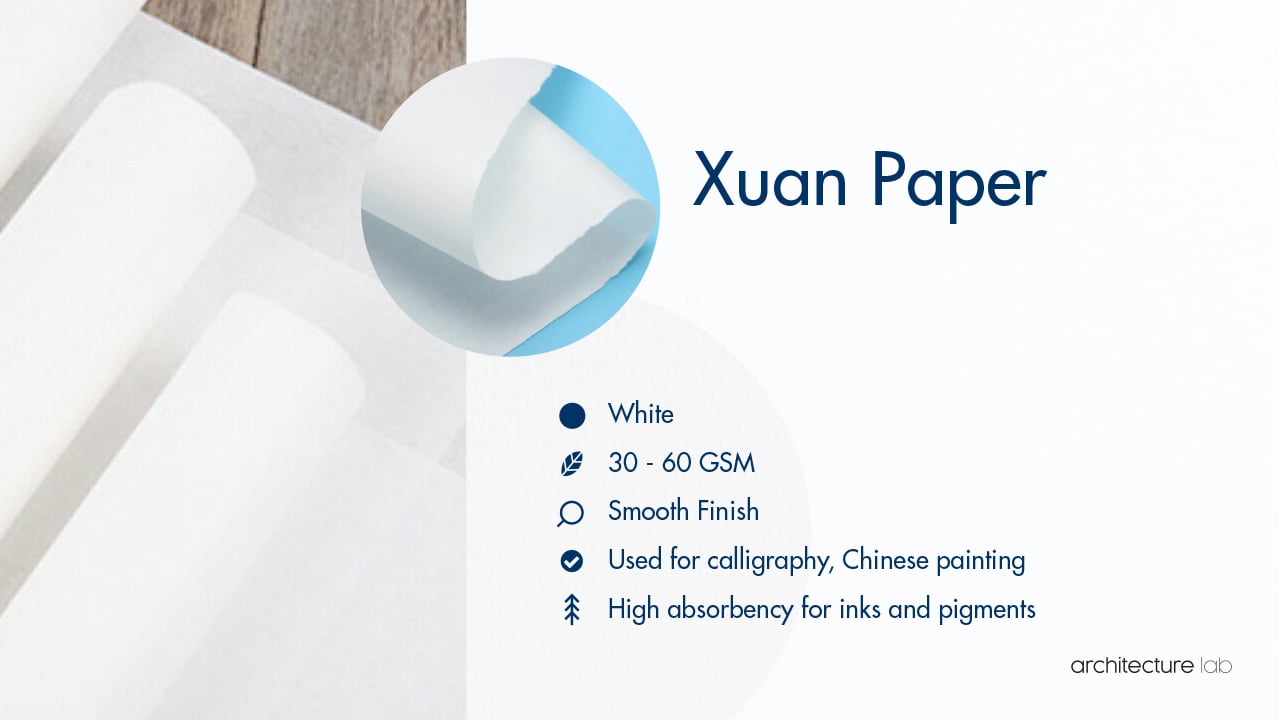
Originating in China, Xuan paper was widely used by famous authors and artists, and their creations have survived until today due to the strength and quality of the paper. Despite the high tensile strength, the paper exhibits a soft and delicate texture, ideal for ancient paintings and Chinese calligraphy.
Moreover, the paper is highly resistant to corrosion and creasing.
34. Wrapping Paper
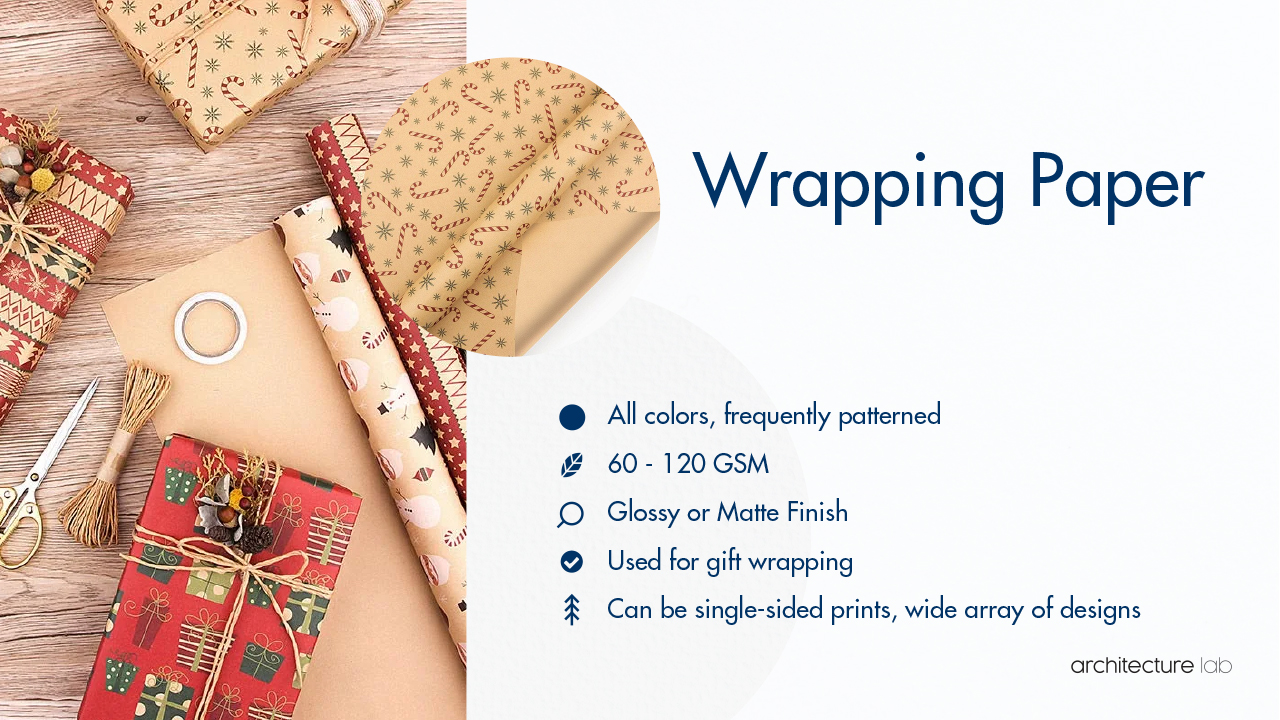
Available in rolls or flat packaged sheets, wrapping paper or gift wrap is a decorative type of paper used to cover gifts for birthdays, holidays, festivals, and special events. The designs on the paper are printed through the process of flexography or rotogravure.
35. Loose-Leaf Filler Paper
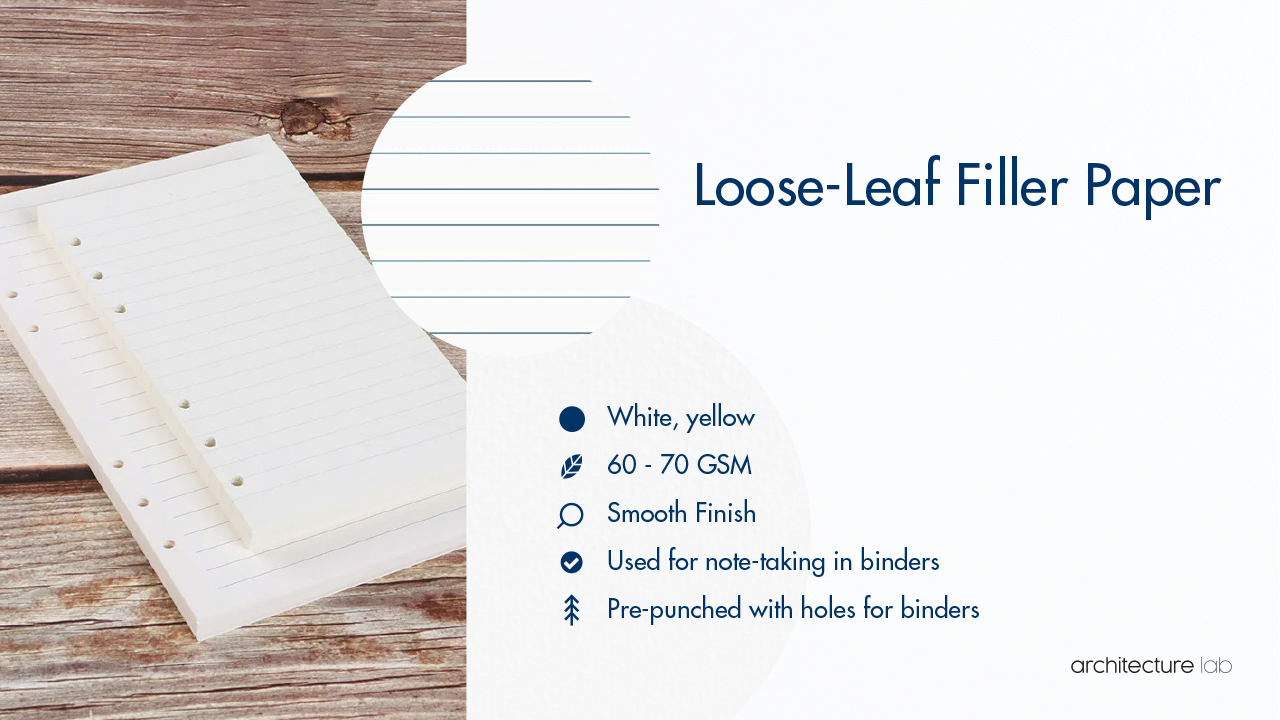
Commonly used in schools and universities, loose-leaf filler paper features printed horizontal lines and pre-punched holes, suitable for note-taking and writing assignments. It is designed so as to fit into binders and files, thereby allowing easy insertion and removal as and when required.
There you have it- 35 paper types and the properties which make one different from the other. Who would have thought there could be so many different papers around the world? This list contains just a fraction of the types of paper out there!
But as every description mentioned, manufacturing paper uses a lot of wood, fibers, and synthetic materials. As such, the paper industry is the fifth largest consumer of energy and contributes 40% of waste in the US.
So, technically, even if you’re using recycled paper, you’re still contributing to more pollution in the world. Hence, many brands have started offering an online flyer that buyers can check before a big launch or sale.
Consequently, you’ll be able to save more by shopping consciously and not impulsively!


